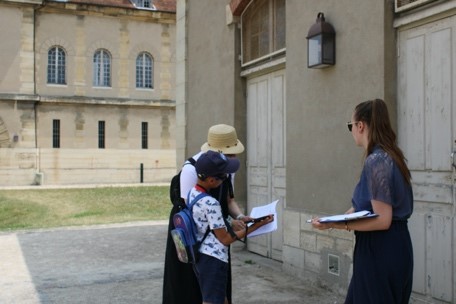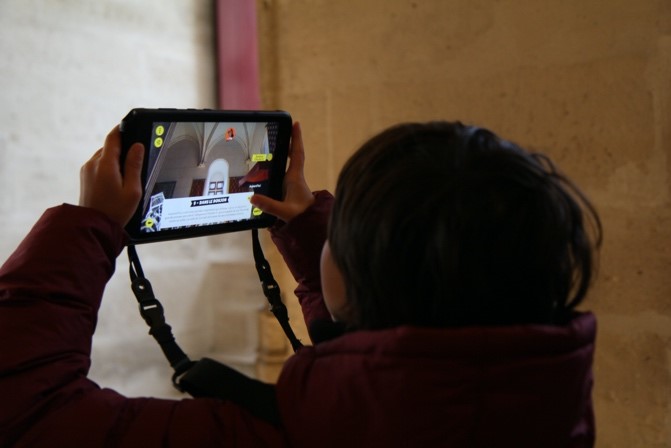Case overview
Since March 2024, the Revelacio tablet at Château de Vincennes has offered a gamified family tour. User testing with focus groups was conducted at two key stages of its development. These tests enabled the teams from the Centre des Monuments Nationaux and Alto to better tailor the tool to visitor needs and ensure broader accessibility.
Project Summary:
- A quest-based experience with puzzles designed for both adults and children
- Silent content using only text and images (except for introductory and concluding videos)
- 3D reconstructions
- Text written in plain language with an accessibility and easy-to-read expert
Importance of user testing for the family tour
First focus group
- Conducted using a printed booklet and some digital screen mock-ups
- Testers: Family audiences (adults + children), including children from underserved communities


Legend: First test of the family tour conducted on-site.
What was tested:
- Assessing the relevance of plain language texts (length, reading level)
- Evaluating comprehension of the app’s graphical mock-ups
- Testing the complexity of the games
Outcomes:
- Simplification and rewording of complex terms: Some texts were too long, reducing accessibility
- Reformulation of some puzzles
Second focus group:
- Conducted using a beta version of the app on tablets.
- Testers: Family audiences (adults + children), including children from underserved communities and two families with hearing-impaired parents


Legend: Second test of the family tour using the tablet.
What was tested:
- Ease of using the tablet
- Bug detection
- Navigation fluidity and autonomous visitor movement
Outcomes:
- Addition of subtitles to videos, making the experience fully accessible for hearing-impaired visitors
- Bug fixes
- Improved directional instructions
- Adjustments to certain technical features for a smoother user experience (e.g., validation times, tutorial revision, etc.)
Key takeaways and challenges
- Conducting user tests at key design stages makes it easier to tailor a product and co-develop cost-effective solutions with the public
- Interface accessibility should be considered from the beginning (e.g., button placement, text size, contrast, etc.)
- Small features can significantly enhance accessibility, such as adding subtitles to videos in a text-heavy experience
